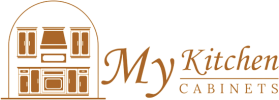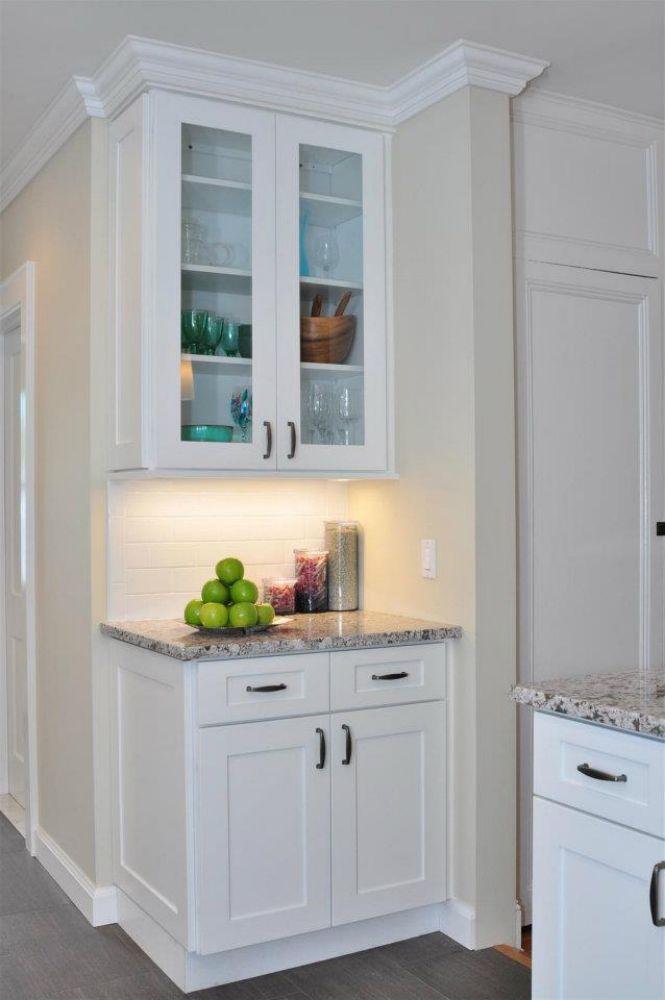The Timeless Appeal of Shaker-Style Cabinets
Shaker-style cabinetry has remained one of the most enduring and versatile design choices in home interiors. Known for its simplicity, craftsmanship, and adaptability, this style blends beautifully with nearly any kitchen theme—from modern minimalism to rustic farmhouse and traditional elegance. Its clean lines, flat center panel, and minimal ornamentation make it a favorite among homeowners seeking timeless beauty and functionality.
However, while shaker-style cabinets may seem simple at first glance, choosing the right ones involves many important decisions—from material quality to color, finish, and hardware. At My Kitchen Cabinets, we understand that selecting the perfect kitchen cabinets goes beyond just aesthetics. It’s about achieving the right balance of durability, budget, and long-term value for your home.
In this comprehensive guide, we’ll walk you through everything you should consider before purchasing shaker-style cabinets so your kitchen renovation is as seamless as your new cabinet doors.
Understanding the Shaker Style: A Brief Overview
The Shaker style originated from the Shaker religious community in the 18th century, whose design philosophy centered on functionality, simplicity, and honest craftsmanship. This timeless look is characterized by:
-
Flat center panels framed by simple, clean edges.
-
Minimal adornment—no elaborate carvings, trims, or moldings.
-
Balanced proportions that create a sense of symmetry and order.
Modern shaker-style kitchen cabinets retain these foundational elements but now feature a variety of finishes, colors, and hardware options that fit both classic and contemporary spaces.
Why Shaker Cabinets Remain a Popular Choice
Shaker cabinets have stood the test of time because they combine form and function effortlessly. Here’s why homeowners and designers continue to choose them:
-
Timeless design: Their minimalist appeal works with virtually any interior style.
-
Versatility: They can be painted, stained, or customized to suit different aesthetics.
-
Easy maintenance: Flat panels and simple edges make cleaning easy.
-
Durability: The five-piece construction method ensures strength and stability.
-
Value retention: Their broad appeal enhances a home’s resale value.
Their clean geometry provides a canvas for creativity—whether you prefer sleek white finishes or bold, modern tones.
Choosing the Right Material for Shaker Cabinets
The material you choose for your shaker-style kitchen cabinets affects both their appearance and lifespan. Let’s explore the most common options:
1. Solid Wood
Solid wood remains the gold standard for cabinet construction due to its strength, longevity, and natural beauty. Woods like maple, cherry, oak, and hickory are commonly used in shaker cabinetry.
-
Pros: Long-lasting, refinishable, and naturally beautiful.
-
Cons: More expensive and sensitive to humidity fluctuations.
2. Plywood
Plywood offers excellent durability at a lower price point. It’s made from multiple layers of wood veneer bonded together, creating strong and stable panels resistant to warping.
-
Pros: Lightweight, durable, and cost-effective.
-
Cons: Slightly less luxurious than solid wood.
3. MDF (Medium-Density Fiberboard)
MDF is a smooth, engineered wood product ideal for painted shaker cabinets. It’s resistant to cracking and warping, making it perfect for humid environments.
-
Pros: Smooth surface for painting, affordable, stable.
-
Cons: Not as durable as solid wood for heavy-duty use.
4. Hybrid Constructions
Many premium cabinet makers use solid wood frames with MDF center panels. This hybrid design maintains durability while minimizing the risk of panel expansion or cracking due to temperature changes.
Choosing the right material ensures your cabinets remain functional and attractive for years.
Selecting the Ideal Finish and Color
The finish you choose for your shaker-style cabinets sets the tone for your entire kitchen. Shaker cabinets are incredibly versatile and work beautifully with a wide range of colors and finishes.
1. Painted Finishes
Painted finishes—especially in white, gray, or navy—are timeless choices. They create a clean, modern look and allow for easy touch-ups.
-
Popular Colors: White for brightness, navy for sophistication, and sage green for a cozy, natural feel.
2. Stained Finishes
Stained finishes enhance the wood’s natural grain, perfect for traditional or farmhouse kitchens. Choose from light oak to deep walnut depending on your design theme.
3. Matte vs. Gloss Finishes
-
Matte: Subtle, elegant, and hides fingerprints well.
-
Gloss: Reflective, modern, and adds visual depth in smaller kitchens.
4. Specialty Finishes
For a more personalized touch, consider distressed, glazed, or two-tone finishes that bring character and texture to your space.
A well-chosen finish highlights the cabinet craftsmanship while complementing countertops, backsplashes, and flooring.
Hardware: The Perfect Finishing Touch
Hardware is the jewelry of your cabinets, and the right choice can completely transform your kitchen’s appearance.
Popular hardware finishes for shaker cabinets include:
-
Brushed Nickel: Sleek and timeless, ideal for modern kitchens.
-
Matte Black: Bold and contemporary, adds dramatic contrast.
-
Satin Brass: Warm and luxurious, pairs beautifully with white or navy shaker cabinets.
-
Oil-Rubbed Bronze: Rich and rustic, perfect for traditional or farmhouse styles.
Hardware Styles:
-
Knobs: Great for doors and smaller drawers.
-
Pulls or Handles: Better for larger drawers or pantry doors.
-
Edge Pulls or Recessed Handles: Offer a minimal, modern look.
At My Kitchen Cabinets, we recommend selecting hardware that complements both the cabinet finish and the overall kitchen style for a cohesive design.
Choosing Between Full Overlay and Inset Doors
Shaker-style cabinets come in two main configurations—full overlay and inset.
Full Overlay Cabinets
In these designs, the door covers nearly the entire face frame, creating a seamless, contemporary look.
-
Pros: Maximizes storage space and offers a clean aesthetic.
-
Cons: Slightly more modern and less traditional.
Inset Cabinets
Inset cabinets feature doors that sit flush within the cabinet frame, exposing a small border around each door.
-
Pros: Exudes craftsmanship and a custom-built look.
-
Cons: More expensive and requires precise alignment.
Your choice depends on your style preference—sleek and modern versus traditional and handcrafted.
Understanding Cabinet Construction Quality
The construction method plays a crucial role in how well your shaker cabinets perform over time.
1. Five-Piece Door Construction
Traditional shaker doors are built using five pieces: a center panel surrounded by four frame pieces. Look for solid joinery methods like mortise and tenon or dowel joints for maximum durability.
2. Drawer Boxes
High-quality drawers should have dovetail joints and solid wood sides for strength. Avoid stapled particleboard drawers that can weaken over time.
3. Hinges and Glides
Soft-close hinges and full-extension drawer glides are must-haves in modern kitchens—they prevent slamming and ensure smooth operation.
4. Cabinet Box Construction
Opt for ½-inch or thicker plywood or hardwood sides. Particleboard cabinets are cheaper but less durable in the long run.
Investing in solid construction ensures your shaker cabinets maintain structural integrity and smooth functionality for decades.
How to Choose the Right Shaker Door Profile
Though shaker-style cabinets are known for simplicity, subtle variations in door design can alter their character.
Common door profile options:
-
Traditional Shaker: Flat center panel with square edges.
-
Beaded Shaker: Adds a narrow groove or “bead” inside the frame for a touch of detail.
-
Slim Shaker: Narrower frame for a modern, minimalist appeal.
-
Transitional Shaker: Combines clean lines with soft beveled edges for versatility.
The right door profile depends on whether you want a purely minimalist look or one that leans more traditional.
Considering Kitchen Layout and Cabinet Size
Before finalizing your purchase, ensure your shaker-style cabinets align with your kitchen’s layout and dimensions.
-
Small Kitchens: Lighter colors and taller upper cabinets create the illusion of space.
-
Large Kitchens: Mix open shelving and closed cabinetry for visual balance.
-
Islands: Consider contrasting shaker cabinets in a bold color to create a design focal point.
-
Ceiling Height: Full-height shaker cabinets eliminate wasted space and add grandeur.
Proper planning ensures your shaker cabinetry enhances both storage and visual harmony.
Matching Shaker Cabinets with Countertops and Backsplash
Your shaker cabinets should coordinate effortlessly with your countertops and backsplash for a cohesive look.
Perfect pairings include:
-
White Shaker Cabinets + Quartz Countertops + Subway Tile Backsplash: Clean and classic.
-
Navy Blue Shaker Cabinets + Marble Countertops + Gold Hardware: Luxurious and modern.
-
Natural Wood Shaker Cabinets + Concrete Countertops + Glass Tile Backsplash: Warm and contemporary.
The key is balance—neutral cabinets can handle bold countertops, while richly colored cabinets pair best with subtle surfaces.
Maintenance Tips for Shaker Cabinets
Keeping shaker-style cabinets in pristine condition requires regular care.
Maintenance essentials:
-
Wipe surfaces with a damp cloth and mild detergent.
-
Avoid abrasive cleaners that damage finishes.
-
Polish hardware periodically to maintain shine.
-
Check hinges and drawer glides for alignment.
Because shaker cabinets have minimal grooves, they’re easier to clean than ornate styles—a major advantage for busy households.
Budget Considerations for Shaker Cabinets
Shaker cabinets are available at various price points depending on material, construction, and customization level.
Budget Breakdown:
-
Stock Cabinets: Most affordable; limited sizes and finishes.
-
Semi-Custom Cabinets: Balance affordability with design flexibility.
-
Custom Cabinets: Fully tailored; higher cost but exceptional quality.
My Kitchen Cabinets offers shaker-style designs that meet every budget while maintaining exceptional craftsmanship and durability.
Sustainable and Eco-Friendly Options
If sustainability matters to you, consider environmentally conscious options when choosing your cabinets.
-
FSC-Certified Wood: Ensures responsible forestry practices.
-
Low-VOC Finishes: Improves indoor air quality.
-
Recycled Materials: Eco-friendly MDF or reclaimed wood options.
Choosing eco-conscious materials supports both your health and the planet without sacrificing quality.
Conclusion
Shaker-style cabinets represent the perfect balance of craftsmanship, simplicity, and adaptability. Whether you’re designing a modern urban kitchen or a cozy farmhouse space, the clean lines and understated elegance of shaker design make it a timeless choice.
When buying your kitchen cabinets, consider factors like material quality, finish, construction, and hardware to ensure lasting performance and aesthetic harmony. Full-overlay designs offer a sleek look, while inset styles highlight traditional craftsmanship. Don’t forget to balance practicality with beauty—investing in quality construction ensures your shaker cabinets remain functional and stylish for years to come.
At My Kitchen Cabinets, we offer expertly crafted shaker-style cabinetry designed to elevate any space. With a range of finishes, colors, and configurations, our cabinets bring enduring beauty and exceptional value to your home. Choosing the right shaker cabinets today means enjoying a kitchen that feels timeless, efficient, and perfectly tailored to your lifestyle.
FAQs
1. What defines shaker-style kitchen cabinets?
Shaker cabinets feature a five-piece door with a flat recessed panel and simple, clean lines. They embody minimalist design principles rooted in craftsmanship and functionality.
2. Are shaker cabinets suitable for modern kitchens?
Yes. Their simplicity allows them to blend seamlessly with modern, traditional, or transitional kitchens. Pair them with contemporary hardware and finishes for a sleek look.
3. What’s the best material for shaker cabinets?
Solid wood offers the best durability, but MDF and plywood are excellent alternatives for painted finishes and budget-friendly options.
4. How do I choose the right color for shaker cabinets?
White and neutral tones are timeless, while navy, sage, or black make bold, modern statements. Always consider your kitchen’s lighting and countertop colors before finalizing.
5. Are shaker cabinets easy to maintain?
Yes. Their flat surfaces and simple edges make cleaning effortless. Regular wiping with mild soap and water keeps them looking new for years.
Read: How do I pick kitchen cabinets that work with quartz or granite countertops?
Read: How do I make sure my kitchen cabinets order includes all needed accessories?

